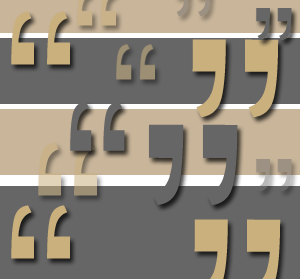
Capturing Family Stories on Video
Butter churning, courtship in the roaring `20s, old-time church revivals, raising children during the Great Depression - these are just some of the stories you might hear by interviewing your grandparents or great-grandparents. When memories like these are preserved, they become powerful forms of family communication that enable those of the younger generation to peer into their history and better understand themselves.
Stories are important forms of family communication. Family members tell the stories that affirm the values they hold and wish to maintain. The story of driving 800 miles to nurse a loved one through the flu affirms the values of loyalty and sacrifice. The story of that crazy hiking trip in the Grand Canyon affirms the value of adventure. Families are the stories they tell.
Second, stories connect the past with the future. Many people can tell you endearing qualities of ancestors they've never met. They were likely the beneficiaries of dedicated story-tellers who carefully preserved and passed down those memories. Cranky Grandpa Gary, intellectual Aunt Mabel, and the classy cousins from Toronto derive their identities from stories told about them--the time Grandpa Gary told off the bus driver, Aunt Mabel's newspaper column, the incredible party the cousins threw.
Third, family stories enable people to better understand themselves. Growing up, Ellen often heard about how she had inherited her great-grandmother's spunk and independent streak. Now, as an eighteen-year-old, she finds needed courage in her first week of college by reflecting on her great-grandmother's fearlessness in attending a mostly male high school in the 1930s. Ellen finds herself in that story.
In the documentary Beneath the Skin, Latina minister Laura Cadena recalls her grandmother telling her about her experiences with racial segregation. “She remembers getting on a bus, and the sign saying `whites only' or `blacks only,' and she didn't know where she was supposed to sit.” This simple story profoundly affects Laura's sense of cultural and racial identity and impacts her communication with others.
Humans use stories to attach meaning to their lived experience. If one has a sense of self, one has stories to tell, and video family memoirs are a great way to capture that lived experience for the next generation. Unlike written memoirs, video-recorded memoirs enable family members to view the facial expressions and hear the vocal inflections that give context to the stories.
Anyone with a basic camera can create a video family memoir. The first step is to talk with the person to be interviewed, and explain that this is the first of many opportunities to preserve his or her reflections for future generations.
The second step is to prepare the questions. The interviewer should have a list of 10 to 15 questions that will get the interviewee talking. For example: “Can you tell me about your relationship with your dad?” “How did the war affect your day-to-day life?” “When was the moment you knew you wanted mom to marry you?” “Can you tell me about a time when you got in trouble as a teenager?” This list of questions should be given to the interviewee ahead of time.
The third step is to set up the equipment. The interviewer should set up the camera so that it gets the interview without getting in the way. It is best to put the camera on a tripod or steady stack of books. Generally, a torso shot (a medium close-up) is better for capturing facial expression and sound. A lapel microphone is advisable if available, and the interviewee should not be in front of a window or another light source. The interviewer should sit to the side of the camera so that the interviewee doesn't have to talk directly to the camera. A conversational feel is best. There are many tutorials on-line that can help you with shooting and editing video on Macs or PCs.
Video family memoirs enable people to learn about their loved ones, themselves, and their values. If families are collections of their stories, capturing those stories is a powerful way to preserve and pass on family identity.

